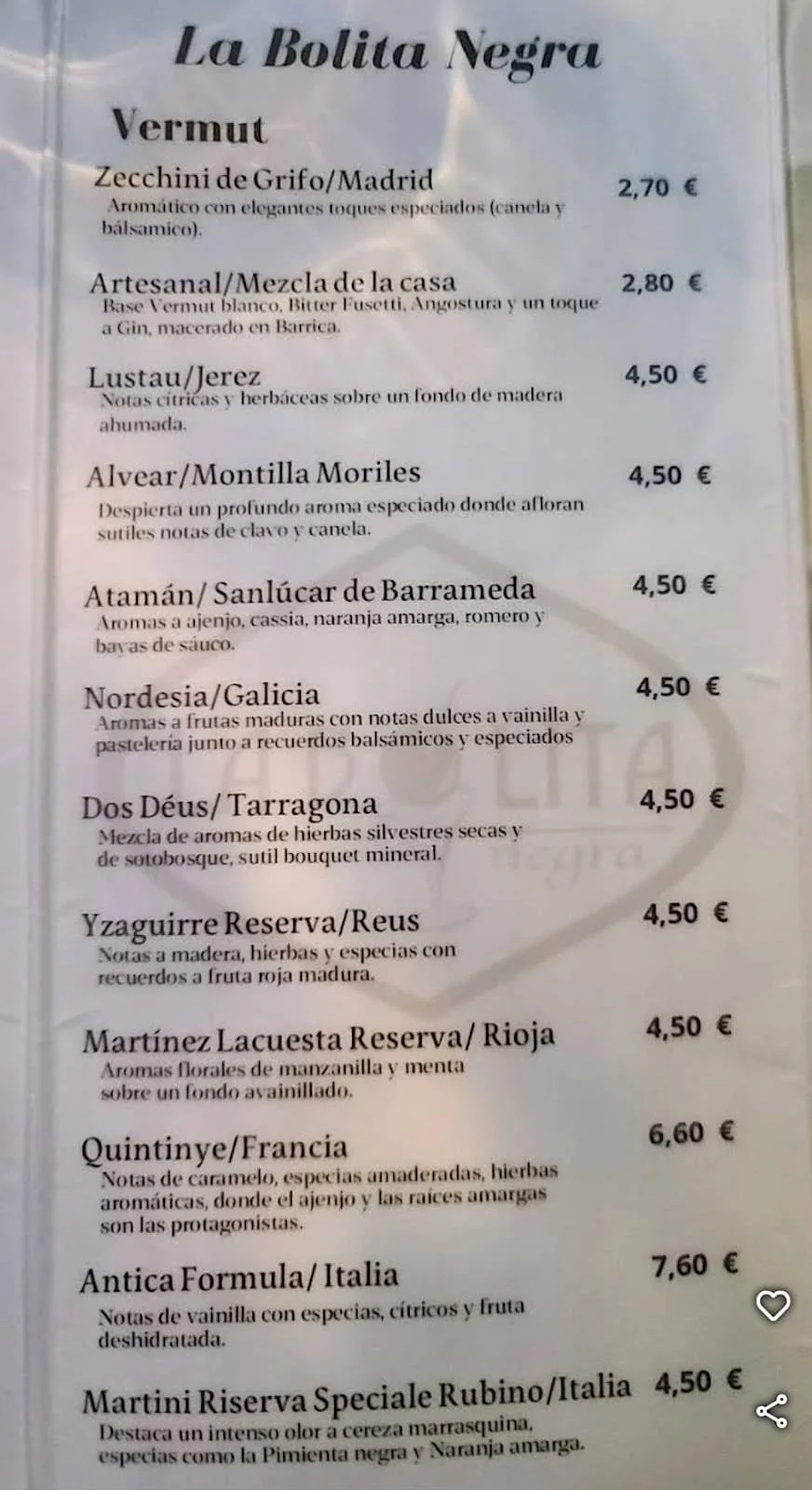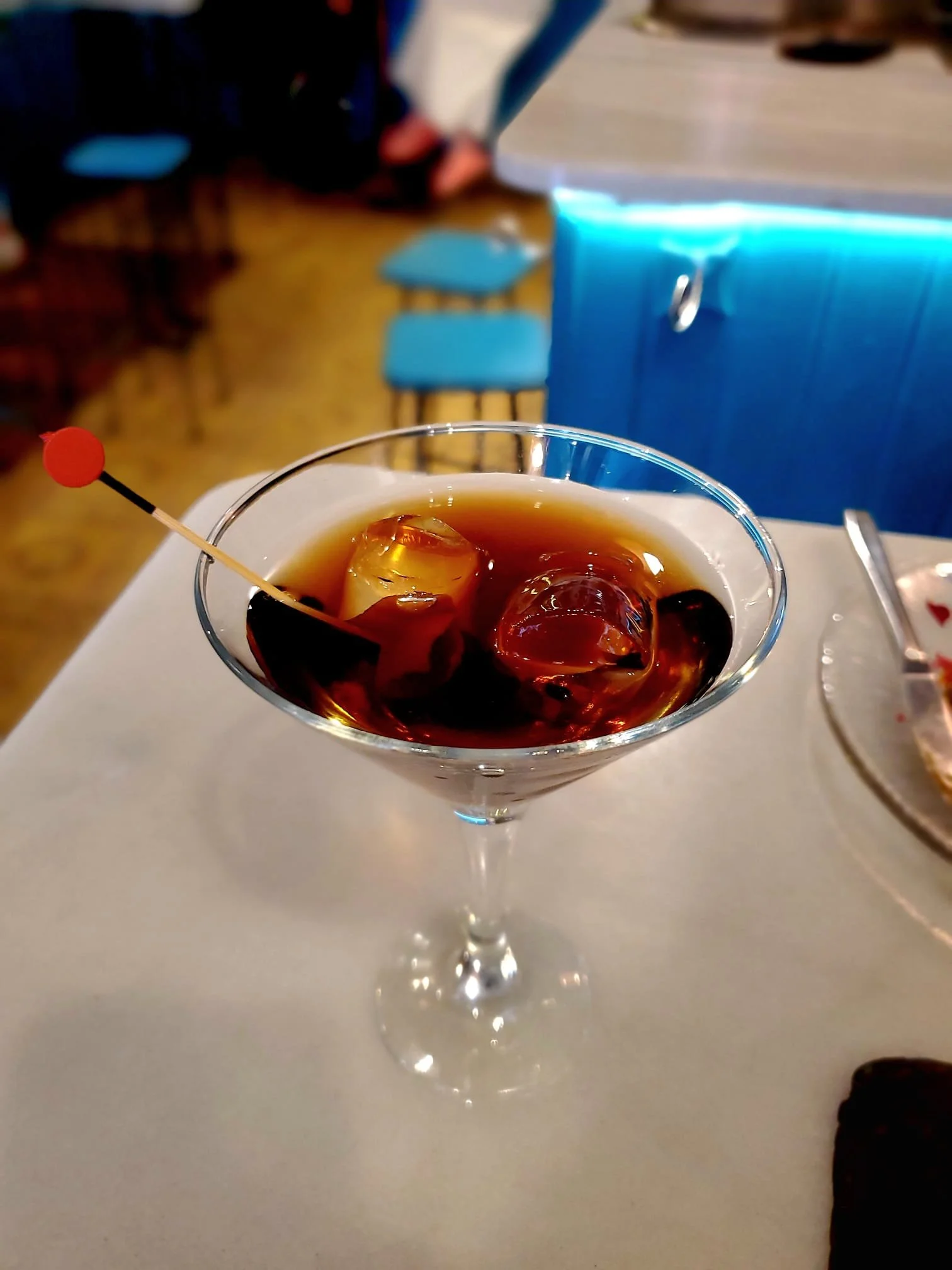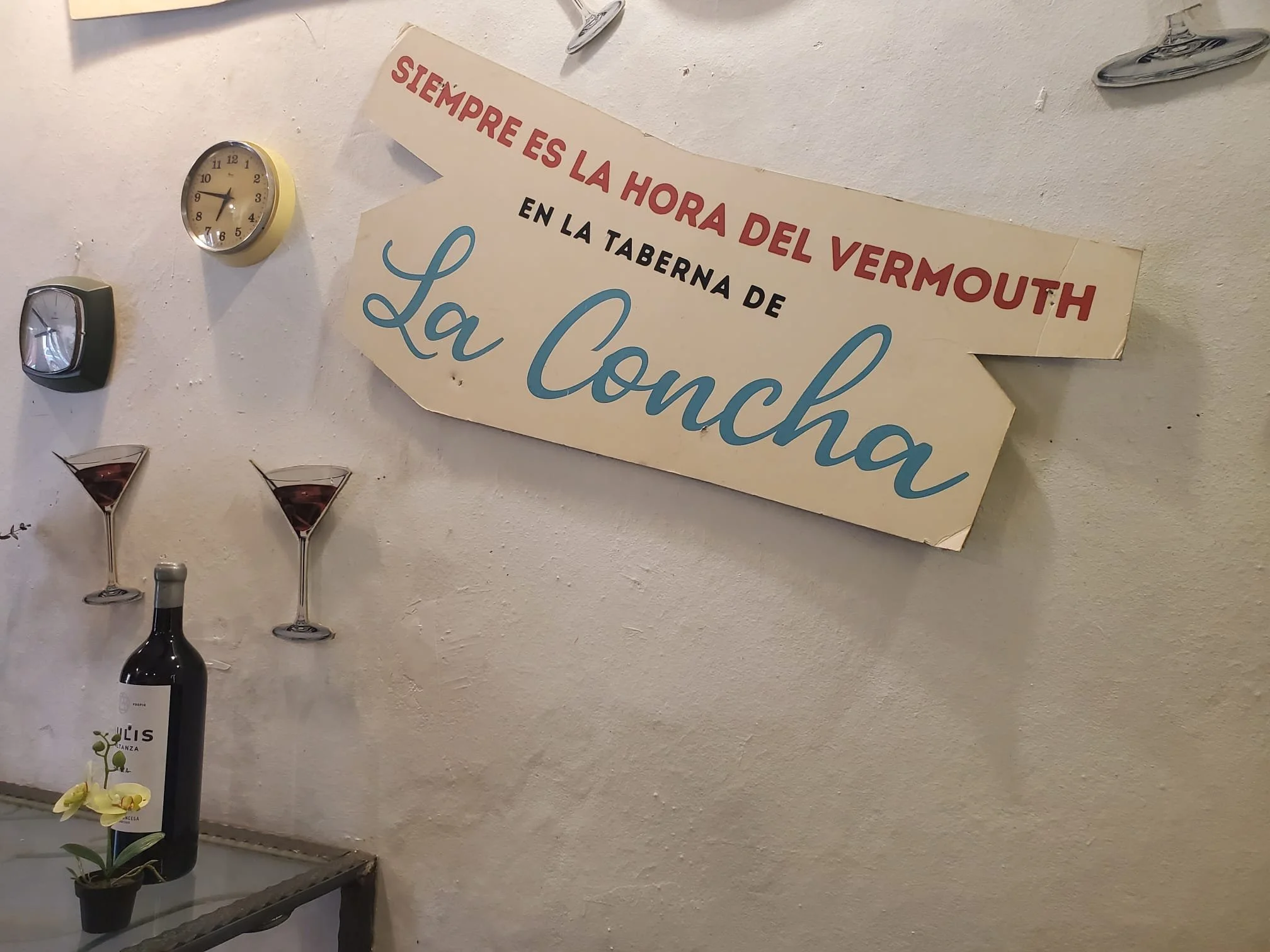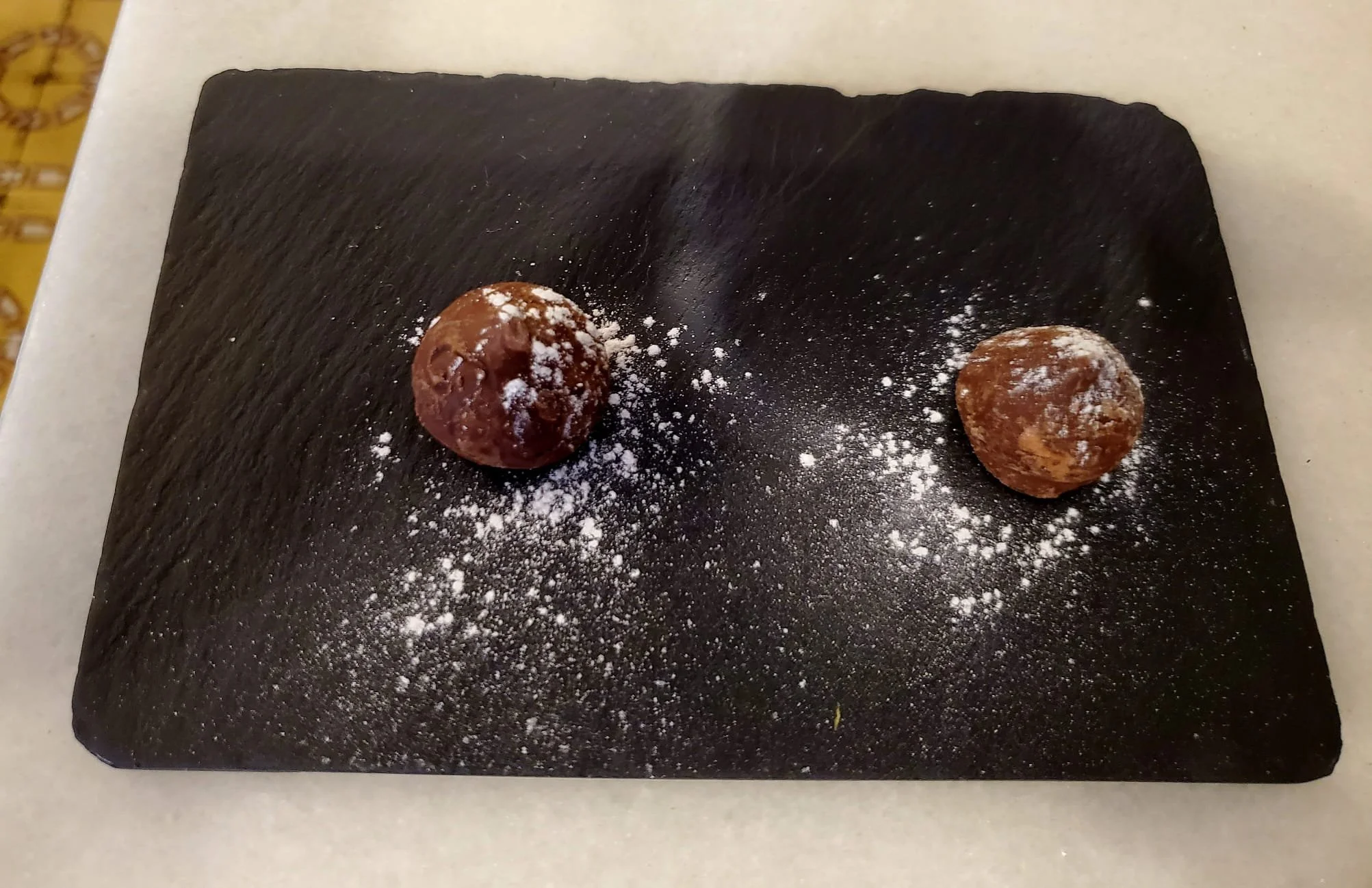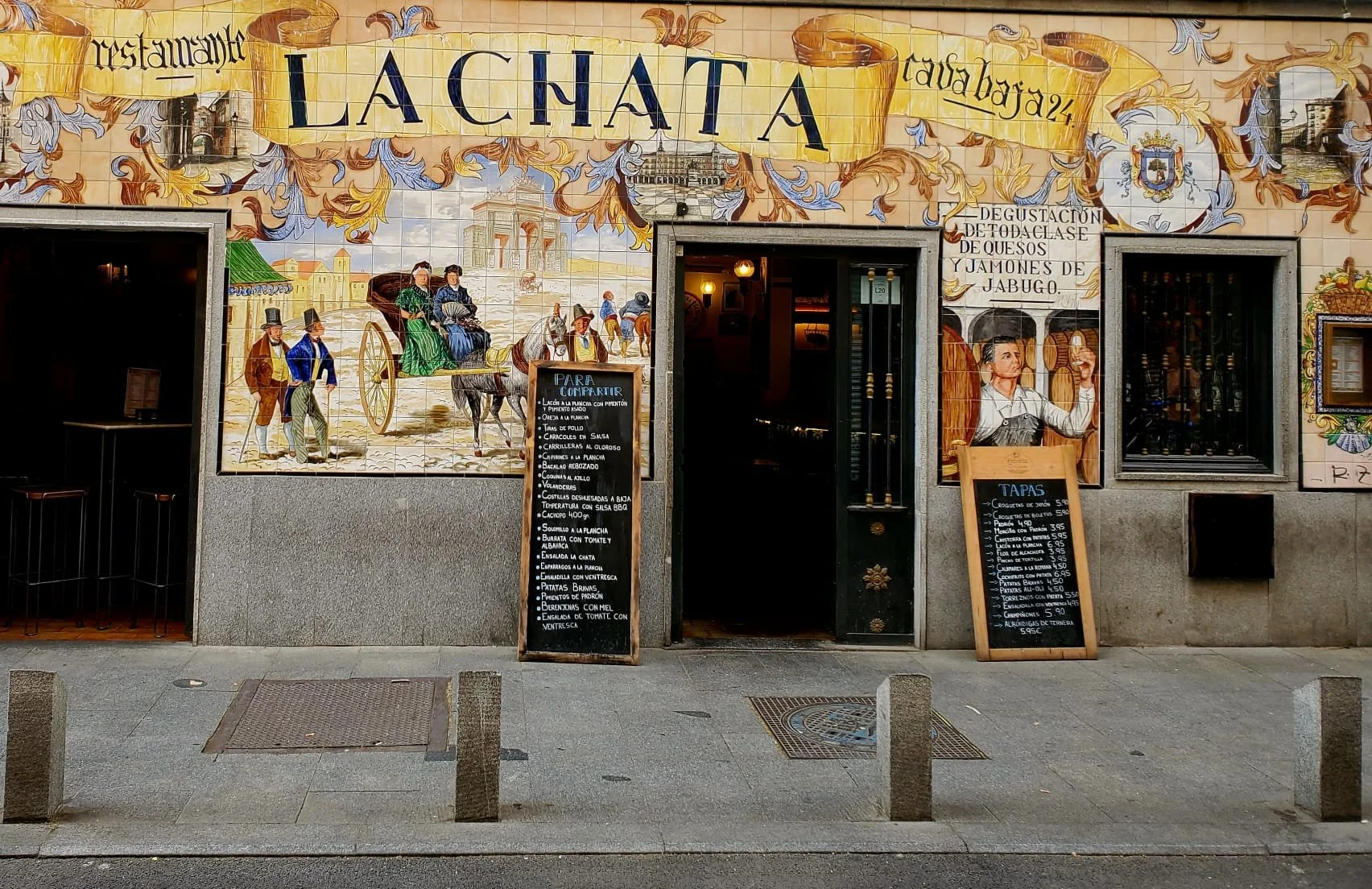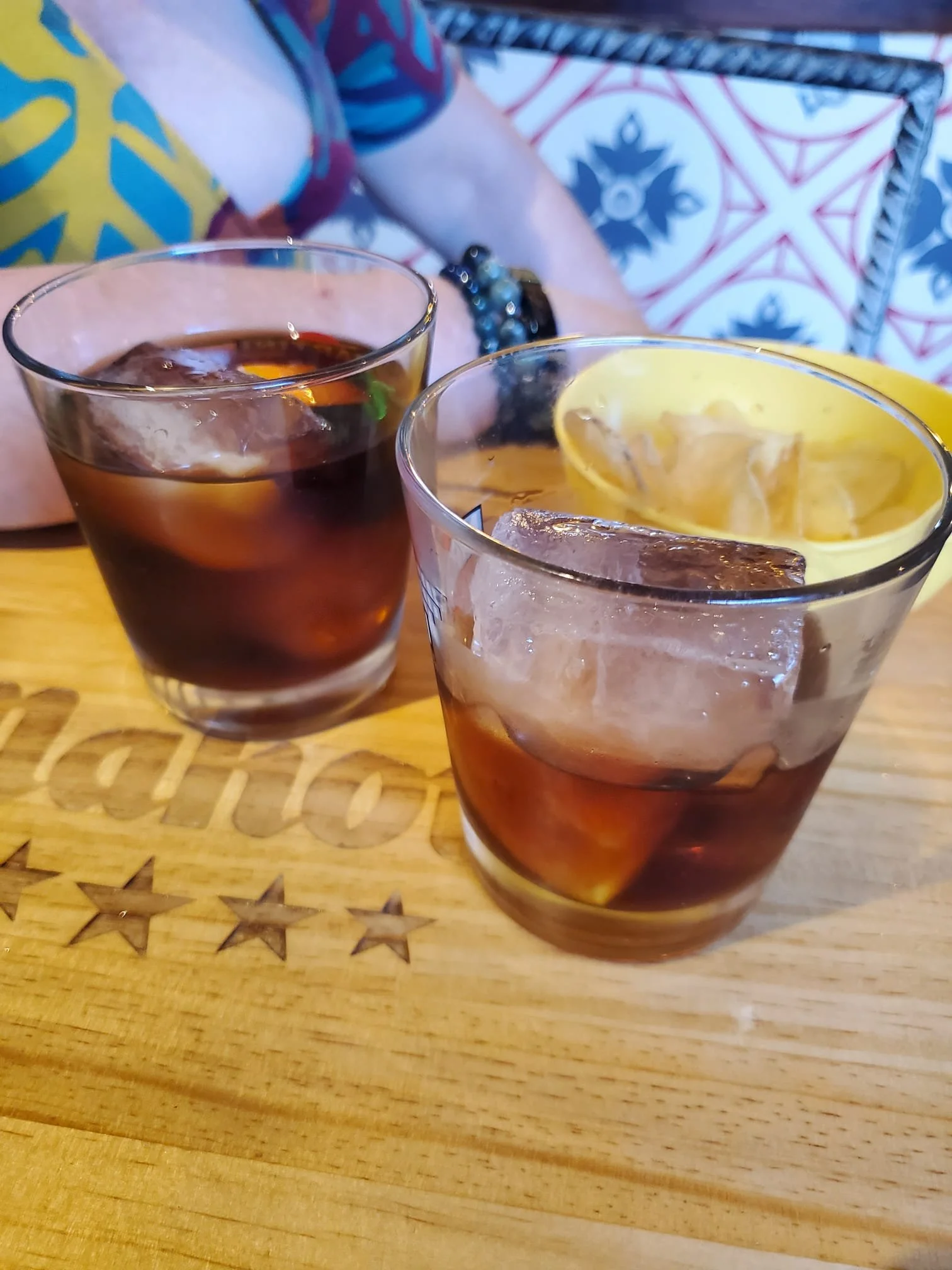Click here to read the previous post, Adjusting to Life in Spain: A Day Trip to Ávila
Calle de la Cava Baja is one of Madrid’s most iconic streets, especially famous for its concentration of traditional taverns and bars. In fact, it has the highest density of bars on a single street—more than 50 bars within 300 meters—in Europe.
The narrow, cobblestone street is located in La Latina, one of Madrid's oldest neighborhoods. It’s lively, historic and a favorite hotspot for both locals and tourists seeking tapas and wine.
Source: Wikimedia Commons
Back in the day (that is, the day 500 years ago), Calle Cava Baja was part of the main medieval route into Madrid. Inns, stables and watering holes opened up to cater to all the people passing through, many of which evolved into today’s taverns and wine bars.
Source: Wikimedia Commons (typical tile street sign, affixed to a building)
The oldest known taberna on this street is the La Posada de la Villa, founded in 1642. It was originally established as an inn (“posada” is Spanish for “inn”) to accommodate travelers and members of the court.
The name Cava Baja ("cava" means "cave" or "moat") refers to the defensive trench or moat that surrounded the old city walls, which was part of Madrid’s southern defensive system.
The street sat just outside of the original Moorish city wall and at La Posada del Dragón, which was built on top the remnants of this medieval wall, you can still see it underneath the glass floor!
Anyway, enough with the history lesson. This is the place to go on a “tapeo” or tapas crawl, hopping from one tavern to the next. It’s like a bar crawl, but there’s always food involved too, not just booze.
And that is what my friend Liz and I did.
La Vermutería
What we had: vermut de grifa y croquetas variadas (vermouth on tap and assorted croquettes)
A few months ago, Liz and I basically bonded over our shared love of vermut (well, actually wine first, then croquetas de jamón, then torreznos, then many other things that had nothing to do with eating or drinking). So, of course, we started our gastronomical adventure at this vermouth bar. It was 5 pm and we easily found an open bar table.
Vermutería is Spanish for vermouth bar, and it was one of the few places I’ve been to that has a variety of vermouth. At most bars they’ll offer you vermouth from a bottle or on tap, and that’s it.
Source: Google Maps
Liz first tried a vermut artesanal (artisanal vermouth), while I went with the ol’ standby vermut de grifo (vermouth on tap). For our second round, she had the vermut de grifo and I tried the vermut jerez (sherry vermouth – more vermouth than sherry). All four were excellent.
We also had a plate of assorted croquetas caseras (house-made croquettes) – jamón, seta, queso, etc. Also all delicious.
It definitely was a bar rather than a taberna (more pub-type bar-slash-restaurant), but at the same time, because this is Spain, it felt like a taberna.
Vermut rating: 5/★★★★★
Taberna de la Concha
What we had: vermut casera y plato de quesos (house-made vermouth and cheese plate)
I had heard that this place was famous for its vermut, as they make their own and prepare it with a few extra touches, such as a spritz of gin and a few drops of campari.
As we approached it, a man standing outside encouraged us to go in. “Do you like vermut?” he asked in accented English (I guess both of us being redheads with ghost-white skin, we were never going to be mistaken for Spaniards). We said yes, and he ushered us in. Again, there was one available tall table right next to the bar and we sat down. This man told the bartenders that we wanted their house-made vermouth.
He then joined some fellows at the next table for a drink or two, and I asked if he worked there, but he said no. He just loved their vermouth so much he felt compelled to point us in the right alcoholic direction.
To go along with our drinks, we ordered the cheese platter, which was divine:
As we were waiting for it, I noticed this sign which I took a picture of to show anyone who dared tell me that in Spain there is a very specific “vermouth hour” (which, according Spain’s Constitution, is between 12-2 p.m., just before lunch). The sign says “It’s always vermouth hour at La Taberna de la Concha.” Hell yeah!!
When the unofficial host (the guy we’d met at the front door) left, he waved goodbye and said “You’re welcome.” We laughed and said “Gracias!”
Soon, we went up to the bar to pay, and upon doing so received two small, incredibly delicious chocolates (dense but creamy).
The vermut was very good, though I deducted .25 stars because I wasn’t a super fan of the hint of gin.
Vermut rating: 4.75/★★★★★
La Osita
What we had: vermut, copa de vino blanco (vermouth, glass of white wine)
We stepped outside and decided to just head down the street and randomly find our next stop. I’d had a list of recommended spots on this calle, but we decided that we’d choose each place based on it not being too crowded (another reason Liz and I get along so well!).
Before we could even take a step, we heard someone calling “Hello!” The guy who’d encouraged us to have a vermut at La Concha was waving from across the street. He and three other guys were having a drink at the outdoor table at La Osita.
Source: Google Maps
We went over to say hi, were introduced to his friends, and when they offered to buy us a vermut, we looked at each other and agreed with more mind reading than words: “This is our next stop then?”
We learned that the self-diagnosed vermut guide was named José. His friends were all friendly and at varying levels of inebriation, so the conversations were lively and fun. José and another guy, Luis, were speaking to us in English – not very well, but with a lot of confidence, which I applaud. We would correct their English and they would correct our Spanish.
One of the guys, Luis, kept insisting I was English (from England) for some reason that escaped me, and no matter how many times I told him I was Canadian (and Liz heartily backed me up), he would shake his head firmly and say, “No. You are English!” At one point when I tried to clarify “You mean I’m an English speaker?”, he doubled down on “No, you were born in England!”
At this point, the third guy, Miguel, asked us if we’d like another vermut, but (again, with a quick look that passed between us) Liz and I declined a second one. I’m afraid it just wasn’t that flavorful, and we both left our glasses half full (but not in the optimistic way!). We both decided on white wine, I went inside with Miguel to help carry the drinks back out.
This white wine was delicious.
Miguel and I mostly spoke in Spanish, and he was a charmer. Told me I was guapa (pretty) several times, guessed my age to be 40 (incorrect, but who am I to dissuade him of his perception?) and then asked for my phone number repeatedly. I told him I was dating someone, to which he responded “¿Y qué?” (“And?” or “So?”) I told him, “Y me gusta mucho, eso es qué.” (“And I like him a lot, that’s what.”)
He then changed tactics and said he just wanted to go to dinner with me as friends, to which I gleefully shouted out my new Spanish slang (with a grin): “¡Pollas en vinagre!” It means “Bullshit!” but the literal translation is “Cocks in vinegar!” (and yes, these crazy Spaniards actually say this). After he closed his gaping mouth, he moved on to try to invite me to the opera – again as “friends” – so I tried out another colorful phrase: “¡Me cago en leche, no quieres estar solo amigos!” (“For fuck’s sake, you don't want to be just friends!”)
Again, his jaw dropped, so I asked if I had used those phrases incorrectly. He said no, not at all, it just surprised him that I used them at all.
That’s when he tilted his head, told me I was refreshingly different and super interesting, and tried to get my number again.
That’s when I turned to Liz and said, “Shall we get going?” to which she heartily replied yes.
By the way, I learned from the fourth guy, Antonio, the quiet one of the group, that they had only just met José half an hour ago. That guy sure gets around! But this is what I love about Spain: You go out for one drink and wind up spending hours meeting and chatting with people who are always happy to make room for you at their table.
Vermut rating: 2.5/★★★★★
Taberna La Chata
What we had: vermut y torreznos (vermouth and pork belly)
La Chata has the most interesting exterior. It’s adorned with intricate ceramic tiles that pay homage to Infanta Isabel de Borbón y Borbón, affectionately known as "La Chata."
She was born in 1851 to Queen Isabel II and held the title of Princess of Asturias until the birth of her brother, Alfonso XII, in 1857. Beloved for her down-to-earth nature and frequent appearances at public events like bullfights and local festivals, she earned the nickname "La Chata," a term of endearment referencing her distinctive nose.
I saw photos of her and couldn’t see anything “distinctive” about her nose, so upon further investigation learned that she had a snub nose (short and slightly upturned), something most people these days would call cute, but decidedly different from the more aquiline profiles traditionally associated with European royalty.
Source: Wikipedia
Anyhoo, we got two seats at the bar and ordered vermut, torreznos and chistorras (and water). I warned you that Liz and I bonded over these culinary delights!



As we sat there having a great time, we suddenly heard giggling coming from the woman who had sat down next to us (to my left). I turned to look. She was writing in a notebook – kind of looked like notes, rather than full paragraphs – and giggling to herself. Maybe at her own literary wit? After this happened a few times, I asked Liz if she thought the woman was laughing at us (we were talking about our experiences in relationships, so I wouldn’t blame her). “Nah,” she said. “I doubt she can even hear us – or understand my Irish-accented English.”
This place had deceptively (because it was served in such a simple glass; not even a low-ball tumbler) excellent vermouth, torreznos and chistorras.
Vermut rating: 4.75/★★★★★
La Esquinita
What we had: vermut y tostada de atún (vermouth and tuna on toast)
We decided to make one last stop and found this place at the south end of the famous street. It had more of a modern bar feel and they specialized in pizza. We ordered vermut and a tostada de atún.
Nice place, fine drinks and food, friendly waiter.
Vermut rating: 4/★★★★★
Now, before anyone tries to pass me a pamphlet to Alcoholics Anonymous, rest assured that A) we had five drinks, always accompanied by food, over the course of five hours, and B) I’ve already got a pamphlet. Nah, just joshing. Like 99.9% of Spaniards, we drank as though we were enjoying the hell outta life but never got drunk (enough to be noticeable)!
Click here to read the next post, Adjusting to Life in Spain: A Day Trip to Alcalá de Henares
Note: All photos taken or created (using DALL-E) by Selena Templeton, unless otherwise noted.
If you enjoyed reading this travel blog, check out some of my other adventures:



